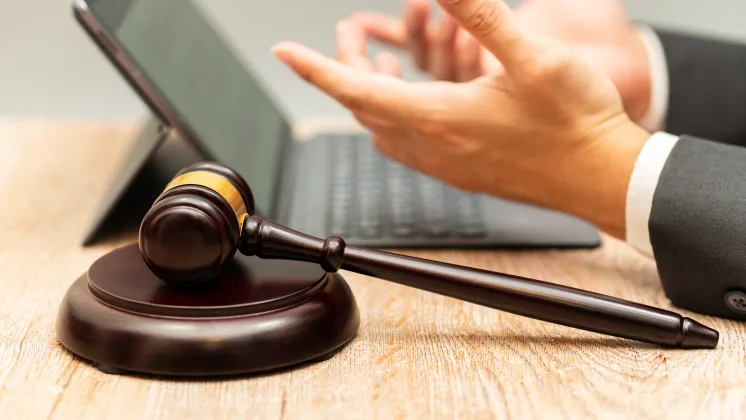10 challenges for auction houses in the digital age

Auction houses have a tradition spanning several centuries. In recent decades, they have undergone a digital transformation, expanding their reach globally. However, this has also brought numerous challenges, particularly in meeting the ever-growing demands and needs of customers.
What do customers expect from an auction house? Surplex asked itself the same question and conducted a survey among its customers. Surplex is one of the leading industrial auction houses in Europe and has been active in the digital trade of used machinery and industrial equipment worldwide through its platform, Surplex.com, since 1999. In order to gain a deeper understanding of its global customers and derive the challenges facing auction houses in the digital age, Surplex conducted a survey and received feedback from nearly 400 participants. The results represent the diverse clientele on the used machinery market in Europe: Especially small and medium-sized enterprises from countries such as Germany, Italy, and Spain as well as from the metal and wood processing, construction and agriculture sectors gave their assessments.
Challenge 1: Local markets
In the times before digitalisation, trade was mostly local. While businesses can now operate globally, there are still significant differences between countries in terms of market practices and preferences. One possible solution is the establishment of local branches and the employment of market experts. The experienced Country Managers at Surplex work in offices across 16 European countries. They are familiar with the national peculiarities and build trust through personal customer interactions.
Challenge 2: Simplicity in the bidding process
In the traditional auction house, the gavel marked the winning bid, and a simple hand gesture could place a bid. This straightforward and direct experience is expected in the digital age. A convoluted or non-transparent bidding process discourages potential buyers.
Challenge 3: Supply and bandwidth
Buyers appreciate an extensive selection and a wide range of items offered at auctions. However, auction houses often face limitations in the variety of items they can offer due to their reliance on sellers. Where there are no sellers, there can be no auctions. Because of this dependency, many auction houses place significant emphasis on targeting potential sellers and focusing on building brand awareness.
Challenge 4: Linguistic diversity
Digitalisation has globalised the second-hand market, making linguistic diversity a central challenge for auction houses. Not every customer speaks English. In response, Surplex.com offers its platform in 18 languages. And the company employs staff from 20 different nations to ensure effective customer support worldwide.
Challenge 5: Accessibility and customer service
In a globalised world where buyers and sellers come from different time zones, round-the-clock accessibility is crucial. Through 24/7 customer support and the use of chatbots and other modern technologies, customer queries can be answered in real-time despite time zone differences. Moreover, multilingualism and helpfulness in customer service are highly valued as they form an essential basis for trust and customer loyalty.
Challenge 6: Valuation of items and technical information
In the auction industry, the accurate valuation of objects and items is of great importance. This ensures that both sellers and buyers engage in fair transactions. Especially for technical items, providing detailed and precise information in text, images, and videos is indispensable to avoid misunderstandings. However, this can be challenging as determining the correct value and providing comprehensive technical data require expert knowledge.
Challenge 7: Virtual viewing
Inspecting items before a purchase often presents a logistical challenge as it typically involves a lengthy journey to the physical location. Virtual 3D viewings offer an innovative solution to this issue. A 3D model is created by capturing the auction item or its surroundings from various angles through photography or filming. Specialised software is then used to combine these images into a three-dimensional representation. This allows potential buyers to gain a detailed view without needing to be physically present.
Challenge 8: Disassembly, transport and customs
International customers expand the reach of auction houses, potentially leading to higher revenues. However, with this global presence comes challenges such as the disassembly of items, international shipping, and compliance with customs regulations. Buyers expect support in these areas. This expanded service transforms the auction house from a mere sales platform into a service provider or even a intermediary.
Challenge 9: Mobile use
B2B auctions have traditionally been conservative, primarily conducted through desktop platforms. In 2023, approximately three-quarters of bids on Surplex were made by desktop users. Nevertheless, mobile usage is gaining importance. To adapt to changing user habits, auction houses must expand their portfolios, such as through mobile apps. These apps can revolutionise the auction experience by sending notifications about upcoming auctions or providing mobile bidding features, enabling buyers to participate flexibly and independently of their location. Surplex has also made relevant adjustments, including a September app relaunch and the introduction of a WhatsApp newsletter, in response to changing user habits.
Challenge 10: Technological future prospects
The digital revolution has already fundamentally transformed auction houses, but the transformation is far from complete. Ongoing technological advancements, such as Virtual Reality (VR) and Augmented Reality (AR), could make virtual viewings even more realistic in the future. Artificial Intelligence (AI) could further automate the appraisal process and offer personalised recommendations to bidders based on their preferences and past bids. With a focus on customer satisfaction, auction houses of the future are likely to be not only places of commerce but also technological pioneers.






